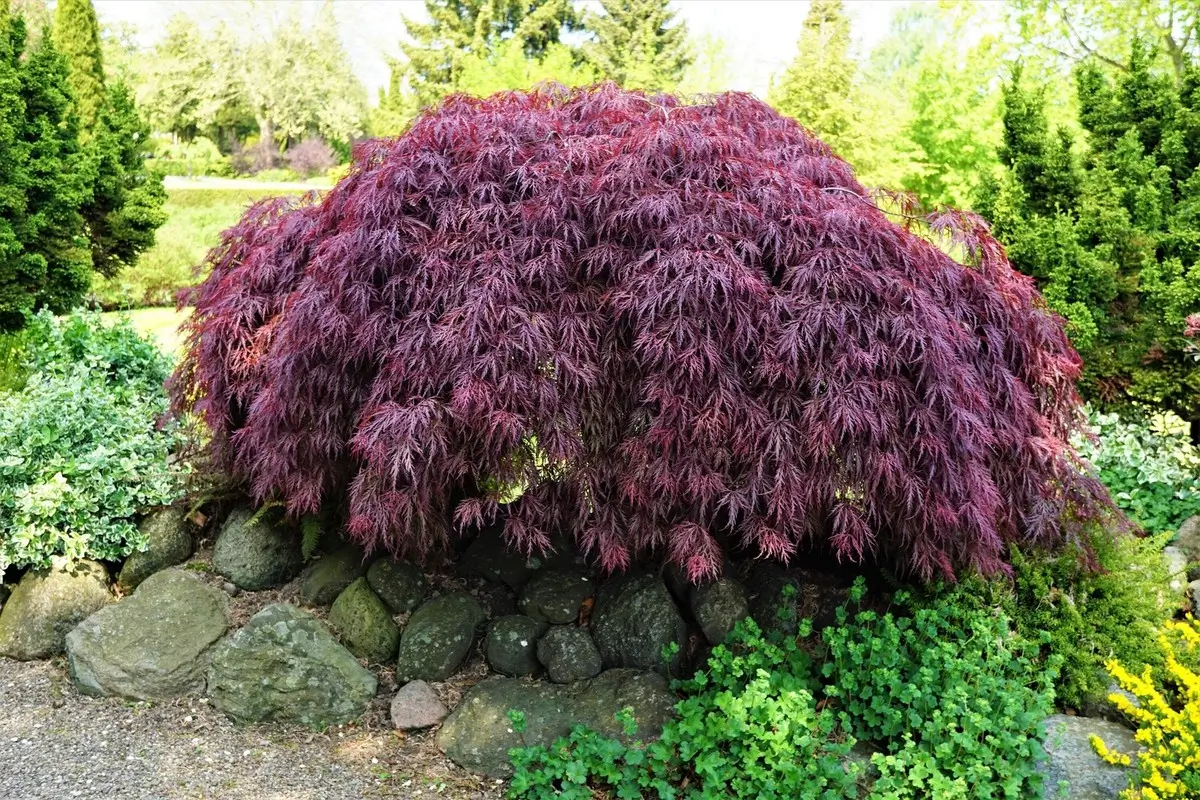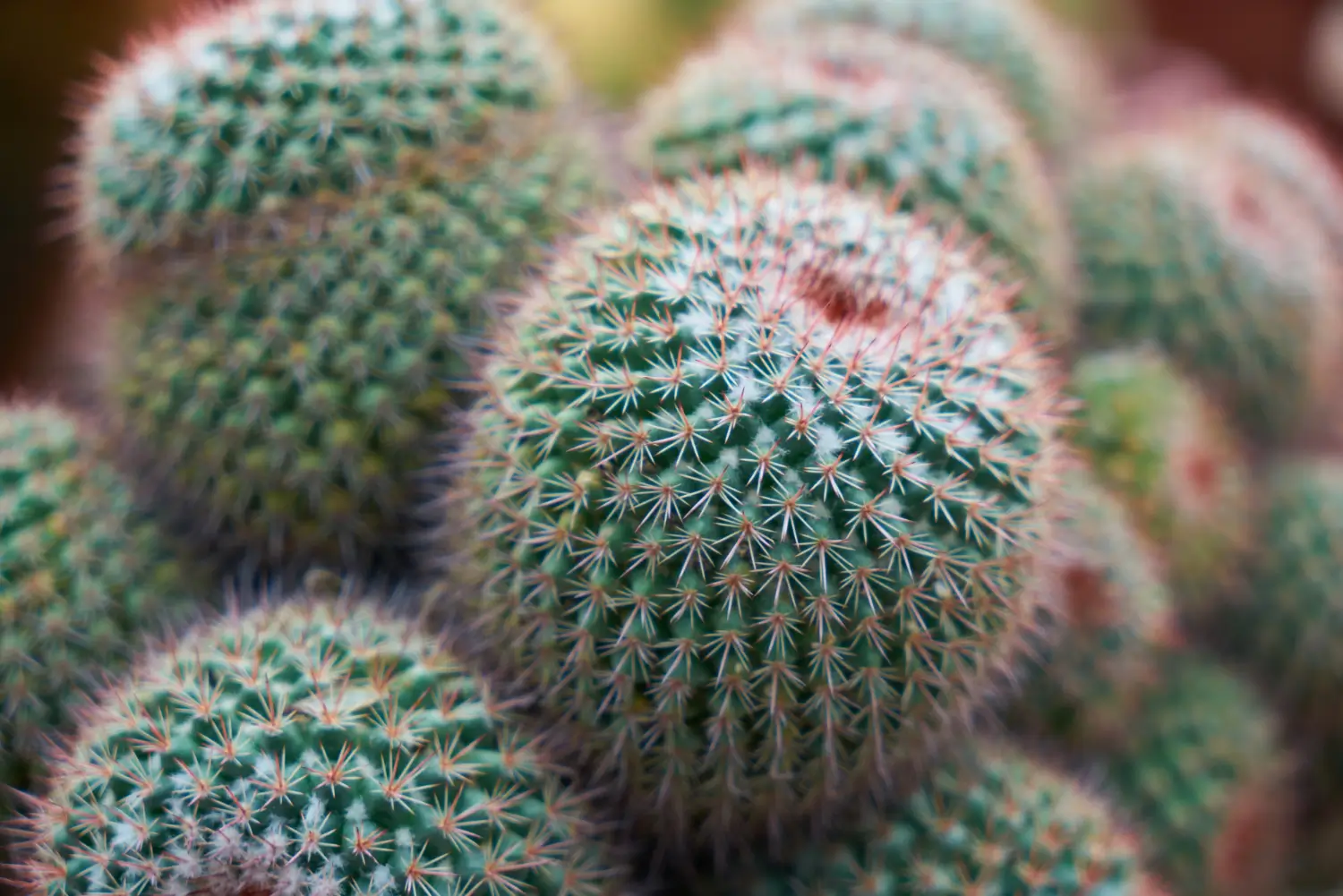
Soil Health & Fertilization
We unite suppliers and green industry professionals worldwide
The Inaba Shidare Japanese Maple (Acer palmatum var. dissectum 'Inaba Shidare') is a stunning ornamental tree known for its dark red, finely cut foliage and pendulous growth habit.
By Victor Miller
|Published on June 16, 2025


The Inaba Shidare Japanese Maple (Acer palmatum var. dissectum 'Inaba Shidare') is a stunning ornamental tree known for its dark red, finely cut foliage and pendulous growth habit. This weeping Japanese maple adds a dramatic, flowing element to gardens, patios, and courtyards, making it a timeless choice for landscapes of all sizes.
Few Japanese maples hold color from season to season like Inaba Shidare, which brings a deep red hue in spring and a vibrant crimson in fall. Its wispy, lace-like leaves and weeping branches form an artistic silhouette adds Japanese flair to any space.
If you want a stunning, compact tree that takes little care, go for the Inaba Shidare Japanese Maple. Keep reading to learn all you need to know about growing, caring for, and maintaining this amazing tree.
| Botanical Name | Acer palmatum var. dissectum 'Inaba Shidare' |
| Common Name | Inaba Shidare Japanese Maple |
| Growth Rate | Slow to moderate |
| Mature size | 6-10 feet tall, 8-12 feet wide |
| Light requirements | Partial shade to full sun (best flower color in filtered light) |
| Soil | Moist, rich, somewhat acidic soil with good drainage |
| Watering Requirements | Moderate; likes soil to stay consistently moist |
| Hardiness Zones | 5–9 |
| Fall Color | Intense red to burgundy |

September 25, 2025
9 minute read
September 24, 2025
9 minute read
September 23, 2025
10 minute read
September 22, 2025
9 minute read


Join as a seller and connect with thousands of B2B buyers nationwide!
Sign Up

African Spear Plant
The African Spear Plant (Sansevieria cylindrica), also known as cylindrical snake plant or spear sansevieria, is a hardy, architectural succulent native to Angola.

Ball Cactus
The Ball Cactus (Parodia magnifica and related species in the Notocactus group) earns its name from its globe-like form and neatly spaced ribs, giving it the appearance of a botanical sculpture

Balloon Flower
The Balloon Flower (Platycodon grandiflorus) is an easily grown perennial that presents its balloon-like buds, which erupt into 5 petaled star shaped flowers

Baltic Blue Pothos
Baltic Blue Pothos (Epipremnum pinnatum ‘Baltic Blue’) is a dramatic variety named for its deep bluish-green leaves, which striking natural splits appear as they grow and evolve
Selecting the proper location is important to ensuring your Inaba Shidare Japanese Maple survives and displays its best colors.
This tree thrives in dappled sunlight and does best in areas that get morning sun but afternoon shade. Although it can take full sun if needed, too much direct exposure in hot climates may lead to leaf scorch. In warmer zones, offer some relief from the hottest part of the day.
An ideal planting site should have:
After planting, keep the soil consistently moist — particularly during the first year -- so that roots establish themselves deep in the ground.
The Inaba Shidare Japanese Maple prefers a fertile, well-drained soil with an optimal pH range of slightly acidic to neutral. Heavy clay or compacted soil can be amended with organic matter such as compost or pine bark to create greater aeration.
Watering is essential, particularly for young trees. To maintain your maple’s health and vigor:
Once established, the tree becomes more drought tolerant, but regular watering during dry spells will help keep it looking lush.
While the Inaba Shidare Japanese Maple tree is low-maintenance, taking a few seasonal care steps can reward you with an even more beautiful and long-lasting tree.
This seasonal dance preserves the health and vibrant coloration of the tree year after year.
Pruning Inaba Shidare Japanese Maple should be done sparingly to maintain its graceful, weeping form.Since this tree naturally grows into an elegant dome shape, excessive pruning may disrupt its structure.
For the best results:
By minimizing the pruning, you let the tree’s natural beauty come through.
Though Inaba Shidare does grow slowly, you can ensure beautiful blossoming and leaf growth by providing it just the right nutrients.
One or two times a year is enough for healthy growth.
This resilient tree is largely trouble-free but may experience occasional pests and environmental stress.
Leaf Scorch: If the edges of the leaves turn brown, it may be exposed to too much direct sun or be watered inconsistently. To prevent this:
Pests and Diseases: Aphids, scale insects and disease are usually not problems but may sometimes occur. Spray with insecticidal soap or neem oil as necessary.
Weak Branches: Since Inaba Shidare has delicate, arching branches, heavy snow or ice can cause breakage. If you live in an area with harsh winters, gently shake off snow buildup to prevent damage.
Get beautiful focal accent trees for your gardens, patios, and landscapes with Inaba Shidare Japanese Maple! With its draping shape, fiery coppery-red leaves, and minimal care requirements, this Japanese maple is one of my best selections for adding year-round elegance to the landscape.
Whether it’s planted in the ground or in a decorative container, this ornamental tree has a classic beauty that gets better with age. If you’re after a tree that will be your best friend if you provide a bit of care and attention Inaba Shidare will add phenomenal beauty to your garden!
Yes, but in hot climates, excessive sun can lead to leaf scorch. It’s best in partial shade, particularly in the afternoon.
Its growth rate is slow to moderate, increasing roughly by 6-12 inches annually.
No, minimal pruning is best. You may trim dead or crowded branches to shape, but nothing else.
Yes, Japanese maples are generally deer resistant, although young trees may still be nibbled.
Yes! It has a small size and non-invasive roots, so it is safe to plant near foundations or patios.

Soil Health & Fertilization
Victor Miller

Pest Identification & Prevention
Victor Miller

Lawn Care Tips & Maintenance
Victor Miller

Soil Health & Fertilization
Victor Miller

Smart Irrigation Systems
Victor Miller

Patios, Walkways & Driveways
Victor Miller

Soil Health & Fertilization
Victor Miller

Pest Identification & Prevention
Victor Miller
My Account
Our team is always here to help.
We are open Monday - Friday, 9:00 AM to 4:30 PM PST.